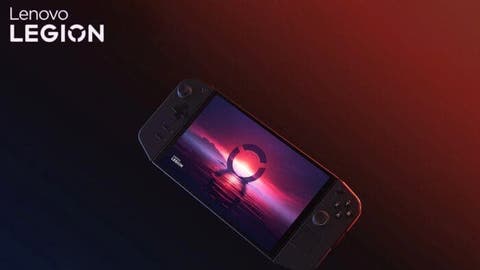Lenovo has officially launched the Legion Go handheld gaming device. It’s the company’s first attempt at Windows gaming handheld devices. While this segment of the market is already very competitive, the Lenovo Legion Go has some unique aspects that make it stand out from the other devices.
Main Highlights of Lenovo Legion Go
While the Lenovo Legion Go may seem like just another handheld entering the market, Lenovo has taken steps to make it stand out. Let’s give you a rundown of its main highlights to give you a proper idea of the device:
Screen
One of the impressive factors about the Lenovo Legion Go is the screen. It features an 8.8-inch QHD+ panel that has a resolution of 2560×1600. To compare, this screen has twice the resolution of the Valve Steam Deck. But what’s more important is that the screen of this handheld features a 144 Hz refresh rate.
This screen resolution of the Lenovo Legion Go suppresses both the Steam Deck and ROG Ally. And this eventually means that you will get a smoother and more responsive visual experience on the handheld.
Moreover, the Legion Go offers a wider color gamut coverage. It’s rated for 97% DCI-P3, which ensures vibrant and true-to-life colors. The touch experience on the screen is better too. It supports 10-point touch input.
Another thing to note is that the screen of the Lenovo Legion Go is optimized for portrait mode. This could lead to a slightly lowered text clarity. But as the handheld is for fast-paced games, this reduced text clarity shouldn’t be a significant concern for the buyers.
CPU and GPU of the Lenovo Legion Go
Under the hood, the Lenovo Legion Go features an AMD Phoenix silicon. It’s customized for power-efficient gaming, which results in a much lower TDP when compared to standard Ryzen 7040 laptop chipsets.
On that note, the Legion Go is available in two different versions. One comes with the Ryzen Z1 Extreme, while the other is a regular Ryzen Z1 non-Extreme version. The first features eight Zen4 cores, with the boost clock reaching up to 5.1 GHz. And the other comes with six Zen4 cores with a boost clock reaching up to 4.9 GHz.
It’s worth noting that the Ryzen Z1 non-Extreme version is based on a different silicon, the Phoenix2. This chipset combines Zen4c and Zen4 microarchitecture. Another difference is that the GPU that powers the two chipsets is different. Z1 Extreme boasts 12 RDNA3 compute units with a boost clock of up to 2.7 GHz.
On the other hand, you get 4 compute units that are clocked at 2.5 GHz on the non-extreme version. This makes the Lenovo Legion Go with the Z1 Extreme a better choice.
Other Specs
When it comes to memory, the Lenovo Legion Go comes with up to 16 GB of LPDDR5X RAM. The memory speed is 7500 MHz, surpassing the speeds of ROG Ally and Steam Deck. As for storage, the handheld utilizes an M.2 2242 slot that features a PCIe Gen4 interface.
In the pre-configured form, you can get it with 256 GB, 512 GB of 1 TB of storage. But it’s possible to pack the Lenovo Legion Go with up to 2 TB of storage.
But what’s really interesting about the Legion Go is that it comes with removable controllers. These removable controllers can also function like a mouse. As a result, you can expect to get better precision while playing first-person shooting games on the handheld.
Moreover, the Lenovo Legion Go has support for external GPUs via the USB-C connector. This is a clear advantage for the handheld over the Steam Deck and ROG Ally.
Follow Gizchina.com on Google News for news and updates in the technology sector.
